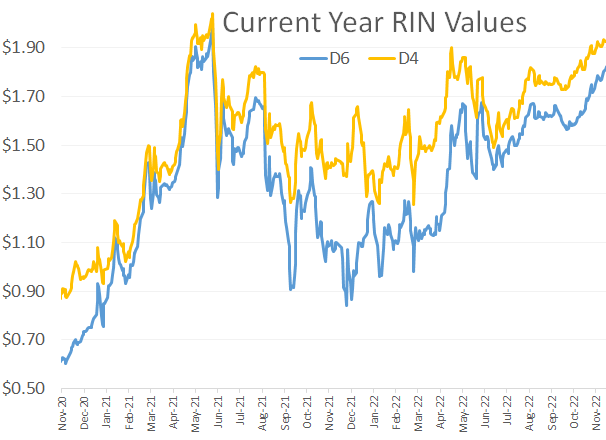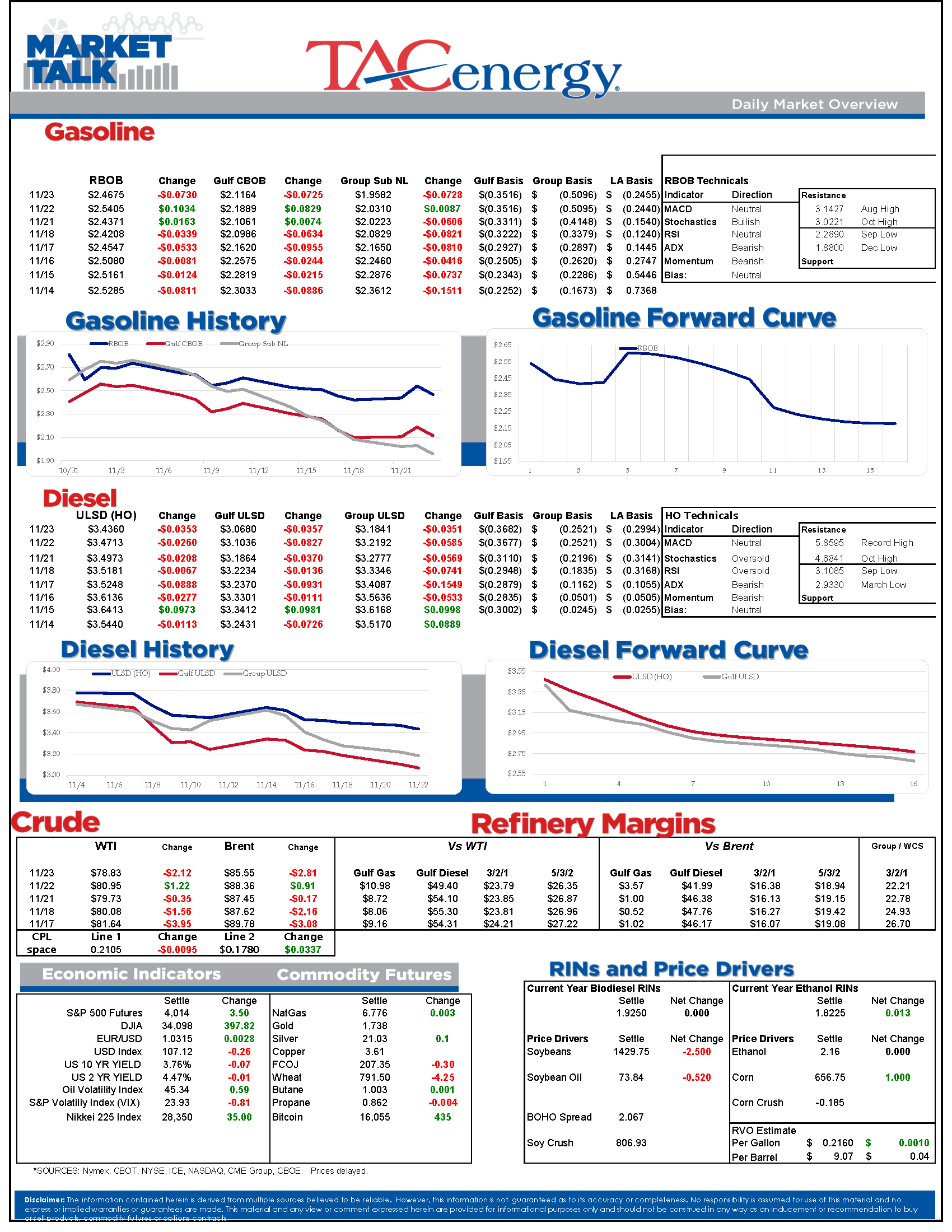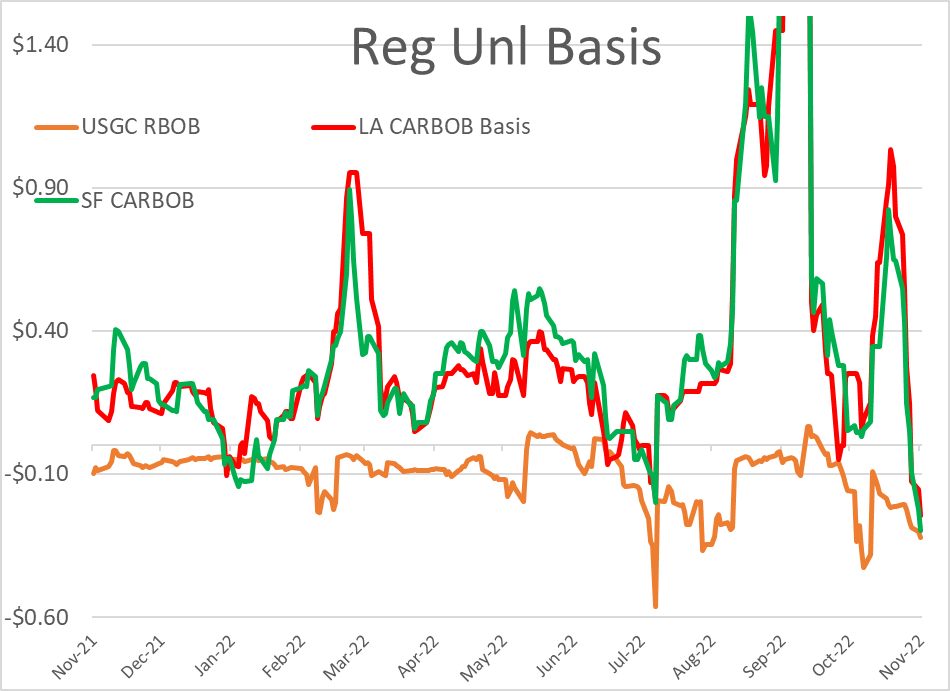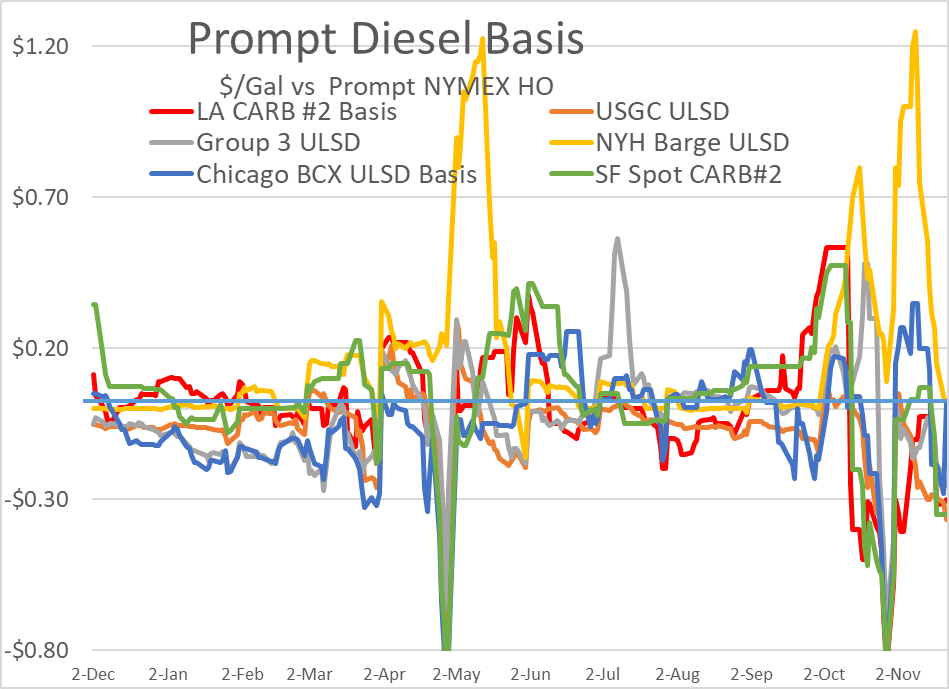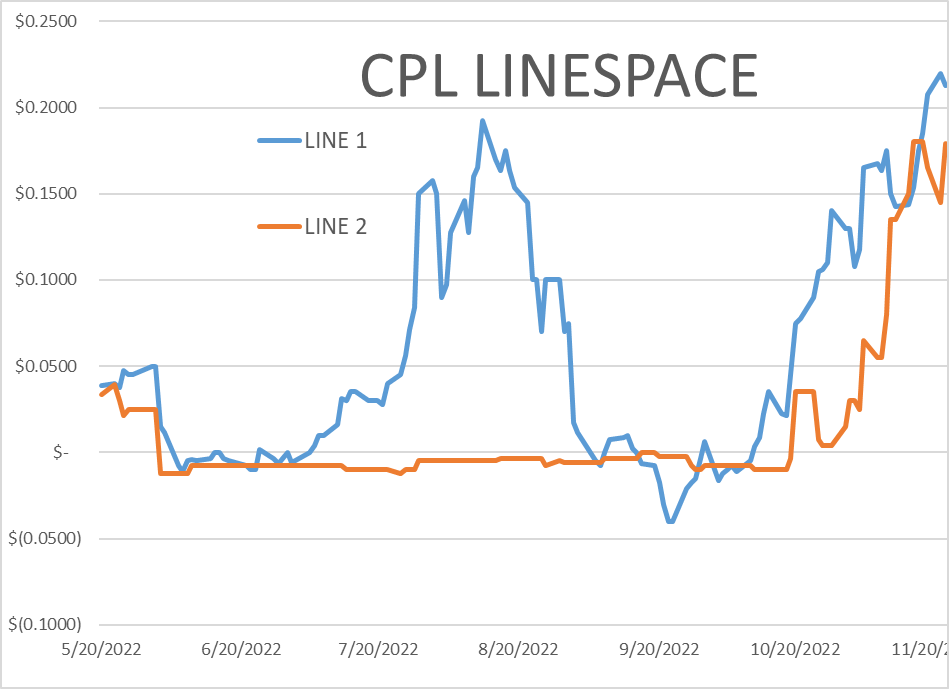Energy Futures Are Seeing A Big Pullback To Start Thanksgiving Eve Trading

Energy futures are seeing a big pullback to start Thanksgiving eve trading, wiping out most of Tuesday’s gains. As traders continue to deal with a daily deluge of dreadful demand headlines from China, offset by uncertainty surrounding supply thanks to OPEC rumors and a plan to cap Russian oil prices that leaves more questions than answers.
More refinery problems seem to have contributed to runup in RBOB futures in the early part of the week, although this morning’s pullback suggests the market really isn’t too worried about gasoline supply. Reports that the Irving refinery on the East Coast of Canada was facing challenges restarting after a major fall turnaround and that BP’s plant in Rotterdam was unable to restart due to a strike are both making waves in futures and physical markets, and could be key factors driving trading as we approach the end of November. Meanwhile, Bulgaria announced that it will exempt its refinery owned by Russia’s Lukoil to continue exporting fuels after the EU embargo starts next month, adding yet another loophole to the attempted sanctions on Russian supplies.
Cash markets around most of the US weren’t buying the futures rally Tuesday, with basis values tumbling for both gasoline and diesel. On the West Coast, gasoline basis values have dropped to their lowest levels in 2 years with discounts ranging from 25-30 cents/gallon, just two weeks after trading at a $1/gallon premium to December RBOB futures. New York harbor diesel has completed its return to earth, trading at just a penny premium to December ULSD futures, just two weeks after reaching an all-time high of $1.25/gallon. Gulf Coast distillates continue to get hammered, trading at a 36 cent discount to Dec ULSD, as refiners continue to struggle to find enough transportation to move their product.
An often-overlooked detail in the breathless reporting of diesel shortages is that the US actually produces more than a million barrels/day more diesel than it consumes, with producers relying heavily on the export market to keep their facilities moving at maximum capacity. What seems to be happening lately is that the refinery hubs have plenty of supply as run rates have been maxed out, but pipeline and vessel availability is lacking, forcing huge discounts for generic origin barrels, and big premiums for anyone who has space along the pipelines heading East and West, or a ship that’s not already booked up. A prime example: With New York ULSD now trading close to par with futures, you might think that the price for space along Colonial would collapse, but it’s holding north of 15 cents as Gulf Coast refiners are paying up to find a home for the diesel they want so badly to continue overproducing given current margins.
The API reported that diesel stocks increased by 1.1 million barrels last week, while gasoline stocks declined by 400,000 barrels. Crude oil stocks declined by more than 4 million barrels, even though the SPR released more than a million barrels on the week, which has helped make that brief contango in WTI prices disappear. The DOE’s weekly report is due out at its normal time today, with the import/export flows key numbers to watch.
Futures will trade in abbreviated sessions Thursday and Friday but spot markets will not be assessed. Even though many would prefer if nothing happened for the next 4 days, rack prices can and will change over the long holiday weekend, especially if we see a big market move like we did last year.
RIN values continue to slowly but steadily climb to an 18 month high as the market awaits the EPA’s big announcement on its new plans for the RFS next week.
Click here to download a PDF of today's TACenergy Market Talk.
Latest Posts
Week 16 - US DOE Inventory Recap
Energy Markets Trading Quietly In The Red As Ethanol Prices Rally To Five-Month High
The Struggle For Renewable Producers Continues As A Rapid Influx Of Supply And Crashing Credit Prices Make Biodiesel
After Years Of Backwardation, Diesel Prices Have Slipped Into Contango Over The Past Week
Social Media
News & Views
View All
Week 16 - US DOE Inventory Recap

Energy Markets Trading Quietly In The Red As Ethanol Prices Rally To Five-Month High
Energy markets are trading quietly in the red to start Wednesday’s session after a healthy bounce Tuesday afternoon suggested the Israel-Iran-linked liquidation had finally run its course.
There are reports of more Ukrainian strikes on Russian energy assets overnight, but the sources are sketchy so far, and the market doesn’t seem to be reacting as if this is legitimate news.
Ethanol prices have rallied to a 5-month high this week as corn and other grain prices have rallied after the latest crop progress update highlighted risks to farmers this year, lower grain export expectations from Ukraine, and the approval of E15 blends this summer despite the fact it pollutes more. The rally in grain and renewables prices has also helped RIN values find a bid after it looked like they were about to test their 4-year lows last week.
The API reported small changes in refined product inventories last week, with gasoline stocks down about 600,000, while distillates were up 724,000. Crude oil inventories increased by 3.2 million barrels according to the industry-group estimates. The DOE’s weekly report is due out at its normal time this morning.
Total reported another upset at its Port Arthur refinery that’s been a frequent flier on the TCEQ alerts since the January deep freeze knocked it offline and damaged multiple operating units. This latest upset seems minor as the un-named unit impacted was returned to normal operations in under an hour. Gulf Coast basis markets have shrugged off most reports of refinery upsets this year as the region remains well supplied, and it’s unlikely we’ll see any impact from this news.
California conversely reacted in a big way to reports of an upset at Chevron’s El Segundo refinery outside of LA, with CARBOB basis values jumping by more than a dime. Energy News Today continued to show its value by reporting the upset before the flaring notice was even reported to area regulators, proving once again it’s ahead of the curve on refinery-related events. Another industry news outlet meanwhile struggled just to remember where the country’s largest diesel seller is located.
Click here to download a PDF of today's TACenergy Market Talk

The Struggle For Renewable Producers Continues As A Rapid Influx Of Supply And Crashing Credit Prices Make Biodiesel
The sigh of relief selloff continues in energy markets Tuesday morning, with gasoline prices now down more than 20 cents in 7 sessions, while diesel prices have dropped 26 cents in the past 12. Crude oil prices are within a few pennies of reaching a 1 month low as a lack of headlines from the world’s hot spots allows some reflection into the state of the world’s spare capacity for both oil and refined products.
Gasoline prices are trading near a 6-week low this morning, but still need to fall about another nickel in order to break the weekly trendline that pushed prices steadily higher since December. If that trend breaks, it will be safer to say that we saw the end of the spring gasoline rally on April 12th for the 2nd year in a row. Last year RBOB futures peaked on April 12 at $2.8943 and bottomed out on May 4th at $2.2500. The high (at this point) for this year was set on April 12th at $2.8516, and the low overnight was $2.6454.
It’s not just energy commodities that are seeing an unwind of the “flight to safety” trade: Gold prices had their biggest selloff in 2 years Monday and continue to point lower today. Just how much money poured into commodities in the weeks leading up to the direct confrontation between Israel and Iran is unclear, but we have seen in year’s past that these unwind-events can create a snowball effect as traders can be forced to sell to cover their margin calls.
Supply > Demand: The EIA this morning highlighted the record setting demand for natural gas in the US last year, which was not nearly enough to offset the glut of supply that forced prices to a record low in February. A shortage of natural gas in Europe was a key driver of the chaotic markets that smashed just about every record in 2022, and an excess of natural gas supply in Europe and the US this year is acting as a buffer, particularly on diesel prices.
The struggle for renewable producers continues as a rapid influx of supply and crashing credit prices make Biodiesel, RD and SAF unprofitable for many. In addition to the plant closures announced in the past 6 months, Vertex Energy reported Monday it’s operating its Renewable Diesel facility in Mobile AL at just 50% of capacity in Q1. The truly scary part for many is that the $1/gallon Blender's tax credit ends this year and is being replaced by the “Clean” Fuel production credit that forces producers to prove their emissions reductions in order to qualify for an increased subsidy. It’s impossible to say at this point how much the net reduction will be for domestic producers, but importers will get nothing, and at current CI values, many biodiesel producers may see their “blend credit” cut by more than half.
Click here to download a PDF of today's TACenergy Market Talk.
